Nikhil Ravi
Preserving Smart Grid Integrity: A Differential Privacy Framework for Secure Detection of False Data Injection Attacks in the Smart Grid
Mar 04, 2024Abstract:In this paper, we present a framework based on differential privacy (DP) for querying electric power measurements to detect system anomalies or bad data caused by false data injections (FDIs). Our DP approach conceals consumption and system matrix data, while simultaneously enabling an untrusted third party to test hypotheses of anomalies, such as an FDI attack, by releasing a randomized sufficient statistic for hypothesis-testing. We consider a measurement model corrupted by Gaussian noise and a sparse noise vector representing the attack, and we observe that the optimal test statistic is a chi-square random variable. To detect possible attacks, we propose a novel DP chi-square noise mechanism that ensures the test does not reveal private information about power injections or the system matrix. The proposed framework provides a robust solution for detecting FDIs while preserving the privacy of sensitive power system data.
Differential Privacy for Class-based Data: A Practical Gaussian Mechanism
Jun 08, 2023



Abstract:In this paper, we present a notion of differential privacy (DP) for data that comes from different classes. Here, the class-membership is private information that needs to be protected. The proposed method is an output perturbation mechanism that adds noise to the release of query response such that the analyst is unable to infer the underlying class-label. The proposed DP method is capable of not only protecting the privacy of class-based data but also meets quality metrics of accuracy and is computationally efficient and practical. We illustrate the efficacy of the proposed method empirically while outperforming the baseline additive Gaussian noise mechanism. We also examine a real-world application and apply the proposed DP method to the autoregression and moving average (ARMA) forecasting method, protecting the privacy of the underlying data source. Case studies on the real-world advanced metering infrastructure (AMI) measurements of household power consumption validate the excellent performance of the proposed DP method while also satisfying the accuracy of forecasted power consumption measurements.
Solar Photovoltaic Systems Metadata Inference and Differentially Private Publication
Apr 07, 2023Abstract:Stakeholders in electricity delivery infrastructure are amassing data about their system demand, use, and operations. Still, they are reluctant to share them, as even sharing aggregated or anonymized electric grid data risks the disclosure of sensitive information. This paper highlights how applying differential privacy to distributed energy resource production data can preserve the usefulness of that data for operations, planning, and research purposes without violating privacy constraints. Differentially private mechanisms can be optimized for queries of interest in the energy sector, with provable privacy and accuracy trade-offs, and can help design differentially private databases for further analysis and research. In this paper, we consider the problem of inference and publication of solar photovoltaic systems' metadata. Metadata such as nameplate capacity, surface azimuth and surface tilt may reveal personally identifiable information regarding the installation behind-the-meter. We describe a methodology to infer the metadata and propose a mechanism based on Bayesian optimization to publish the inferred metadata in a differentially private manner. The proposed mechanism is numerically validated using real-world solar power generation data.
Differentially Private $K$-means Clustering Applied to Meter Data Analysis and Synthesis
Dec 07, 2021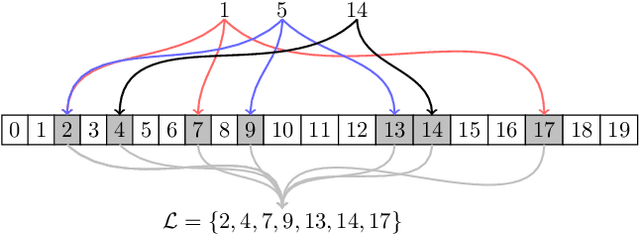
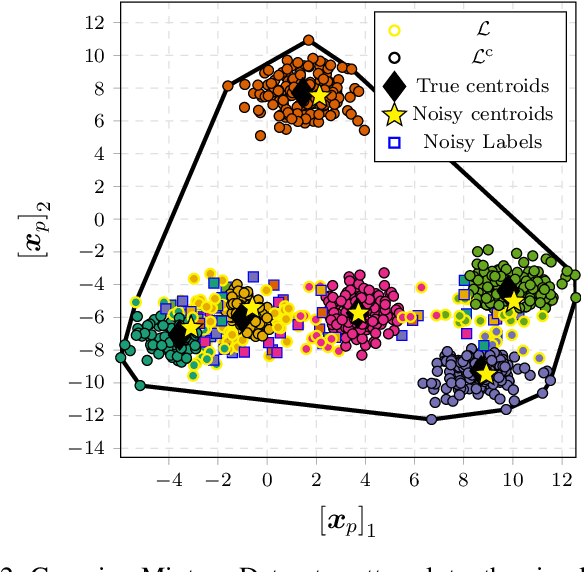

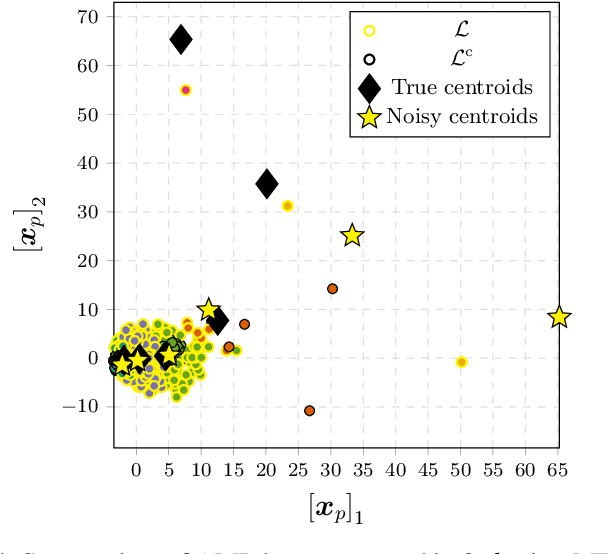
Abstract:The proliferation of smart meters has resulted in a large amount of data being generated. It is increasingly apparent that methods are required for allowing a variety of stakeholders to leverage the data in a manner that preserves the privacy of the consumers. The sector is scrambling to define policies, such as the so called '15/15 rule', to respond to the need. However, the current policies fail to adequately guarantee privacy. In this paper, we address the problem of allowing third parties to apply $K$-means clustering, obtaining customer labels and centroids for a set of load time series by applying the framework of differential privacy. We leverage the method to design an algorithm that generates differentially private synthetic load data consistent with the labeled data. We test our algorithm's utility by answering summary statistics such as average daily load profiles for a 2-dimensional synthetic dataset and a real-world power load dataset.
Colored Noise Mechanism for Differentially Private Clustering
Nov 15, 2021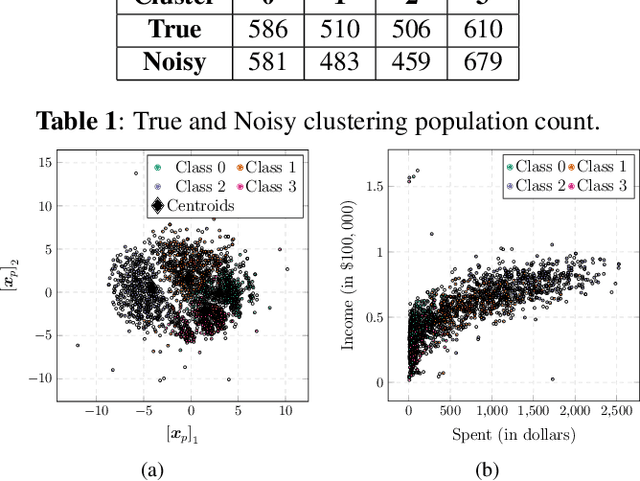
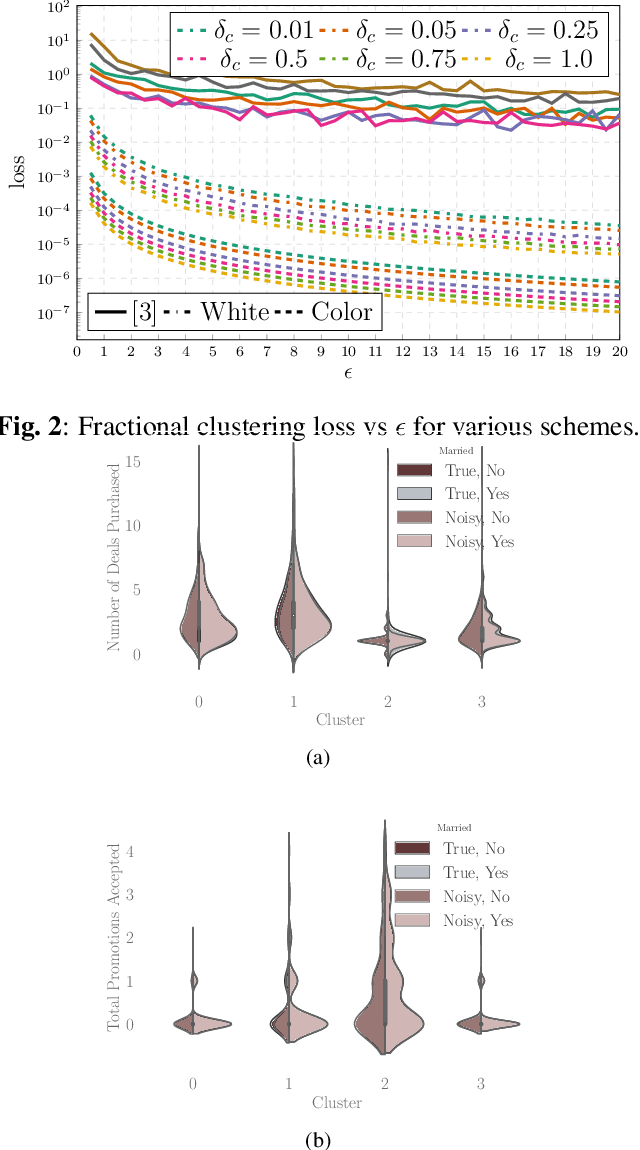
Abstract:The goal of this paper is to propose and analyze a differentially private randomized mechanism for the $K$-means query. The goal is to ensure that the information received about the cluster-centroids is differentially private. The method consists in adding Gaussian noise with an optimum covariance. The main result of the paper is the analytical solution for the optimum covariance as a function of the database. Comparisons with the state of the art prove the efficacy of our approach.
PULSE: Self-Supervised Photo Upsampling via Latent Space Exploration of Generative Models
Mar 08, 2020



Abstract:The primary aim of single-image super-resolution is to construct a high-resolution (HR) image from a corresponding low-resolution (LR) input. In previous approaches, which have generally been supervised, the training objective typically measures a pixel-wise average distance between the super-resolved (SR) and HR images. Optimizing such metrics often leads to blurring, especially in high variance (detailed) regions. We propose an alternative formulation of the super-resolution problem based on creating realistic SR images that downscale correctly. We present a novel super-resolution algorithm addressing this problem, PULSE (Photo Upsampling via Latent Space Exploration), which generates high-resolution, realistic images at resolutions previously unseen in the literature. It accomplishes this in an entirely self-supervised fashion and is not confined to a specific degradation operator used during training, unlike previous methods (which require training on databases of LR-HR image pairs for supervised learning). Instead of starting with the LR image and slowly adding detail, PULSE traverses the high-resolution natural image manifold, searching for images that downscale to the original LR image. This is formalized through the "downscaling loss," which guides exploration through the latent space of a generative model. By leveraging properties of high-dimensional Gaussians, we restrict the search space to guarantee that our outputs are realistic. PULSE thereby generates super-resolved images that both are realistic and downscale correctly. We show extensive experimental results demonstrating the efficacy of our approach in the domain of face super-resolution (also known as face hallucination). Our method outperforms state-of-the-art methods in perceptual quality at higher resolutions and scale factors than previously possible.
New Techniques for Preserving Global Structure and Denoising with Low Information Loss in Single-Image Super-Resolution
Jun 16, 2018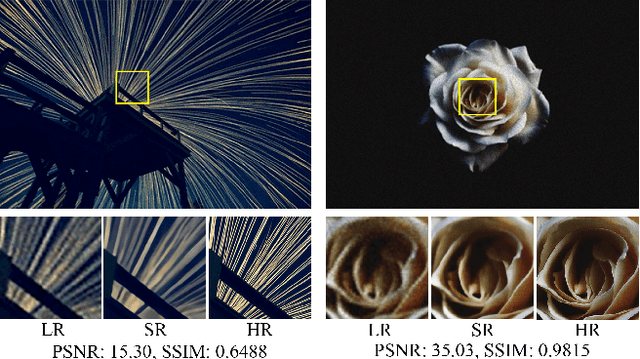
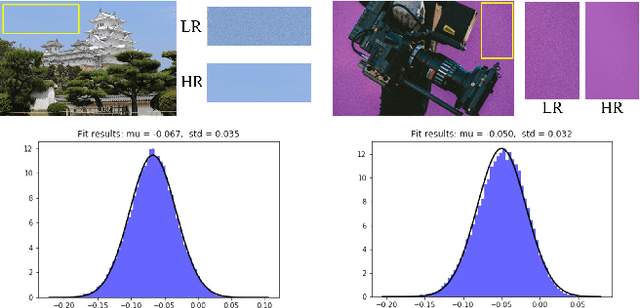

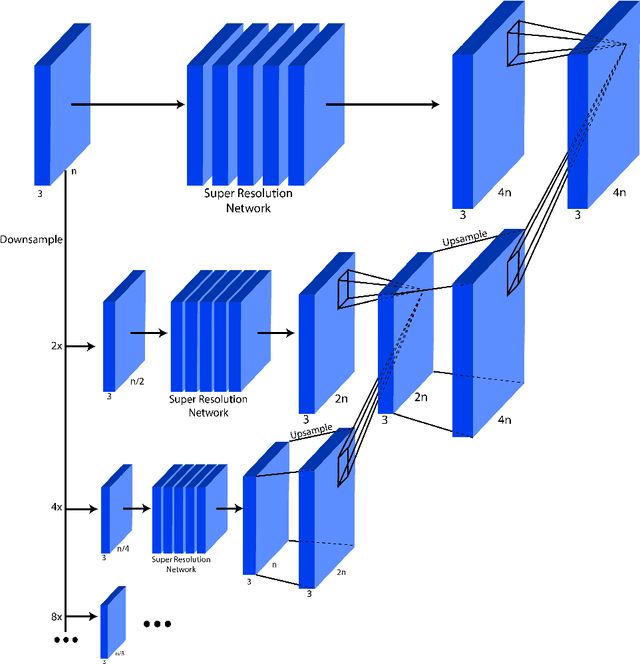
Abstract:This work identifies and addresses two important technical challenges in single-image super-resolution: (1) how to upsample an image without magnifying noise and (2) how to preserve large scale structure when upsampling. We summarize the techniques we developed for our second place entry in Track 1 (Bicubic Downsampling), seventh place entry in Track 2 (Realistic Adverse Conditions), and seventh place entry in Track 3 (Realistic difficult) in the 2018 NTIRE Super-Resolution Challenge. Furthermore, we present new neural network architectures that specifically address the two challenges listed above: denoising and preservation of large-scale structure.
 Add to Chrome
Add to Chrome Add to Firefox
Add to Firefox Add to Edge
Add to Edge